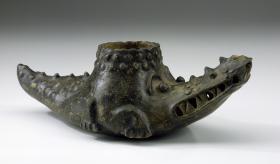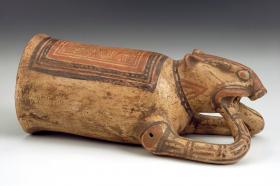1. Allow students to locate Costa Rica on a world map. Ask students to speculate about the topography and climate of this country. Ask them to predict the types of animals that might live in this environment. Determine the latitude and longitude of the country and discuss its relationship to the equator. Allow students to use Google Earth to explore different regions of Costa Rica and make predictions.
2. Break the class into 11 groups. Using the Costa Rica Web site, have each group research one section from the Web site (The Land, A Backbone of Mountains, Meseta Central, Northern Lowlands and Caribbean Coast, Pacific Coast, Geology, Earthquakes, Volcanoes, Climate, Temperatures, Rainfall). Tell students to read their section and create a creative poster about their topic, including facts and pictures. Have the groups share their posters.
3. Have students complete the Costa Rica Reflection Handout based on what they learned from Google Earth and the group presentations.
4. Keeping students in groups, allow the students to study one of the Costa Rican works of art. Ask students to discuss the work of art. Questions include: What do you see in your artwork? What do you think it is made of? What type of animal is depicted by your object? (collared peccary, crocodile, jaguar). Ask students to read the art background information for more facts. Allow students to use the Internet or other book resources to research the animal depicted by their piece of art.
5. Project the artwork and have students present their research, telling about the artwork and the animal depicted in the art.
6. Once every group has presented, discuss the animals of the rainforest. Ask: Would all of these animals live in the same part of the Costa Rican rainforest? Why or why not?
7. As a class, discuss the different layers of vegetation found in the rainforest, including the forest floor, understory, canopy, and emergent layer. Have students create a flip foldable, drawing a picture of each layer on the outside of the foldable and listing the physical characteristics of each layer under the picture. Refer to Directions to Flip Foldable Handout.
8. Show students the Rainforest Virtual Field Trip PowerPoint and ask students to take notes on each layer of the rainforest on their foldables. Students can also use the textbook or Internet resources to find information for the foldable. Students should then draw each layer on a separate flap of the foldable so that each layer of the rainforest has its own separate flap, but together, the flaps make an entire picture of the vegetation layers of the rainforest. Extension: Have students sing the “Layers of the Rainforest” song to help reinforce the information.
9. Give students a large piece of drawing paper with crayons, markers, colored pencils, or collage materials and glue. Have them fold their papers into the four sections and label the layers of vegetation.
Have students draw a background of the rainforest. Using the Rainforest Animals Handout, students should cut out the animals, color them, and glue them into the correct locations of the rainforest.
10. Have students create a travel brochure that promotes Costa Rica’s rainforest. The brochure should tell about the weather and environment, ecology, travel information, and endangered species. Refer to the Rainforest Travel Brochure and Rubric Handout. The brochures can be displayed alongside the students’ collages of the rainforest and the rainforest foldables.
1. Group discussion, poster, and presentation will demonstrate students’ knowledge of aspects of Costa Rica.
2. Costa Rica Reflection Handout will demonstrate students’ understanding of the characteristics of Costa Rica.
3. The rain forest drawing will assess the students’ knowledge of the various layers of the rain forest and the animal and plant life at each level.
4. The Costa Rica travel brochure will assess students’ understanding of life in the Costa Rica rainforest. (rubric)
forest floor
understory
canopy
emergent layer
peccary
hummingbird
resplendent quetzal
computers with Google Earth capabilities
posterboard
computers with Internet access
projector
Ancient Americans often buried ceramic pots and other works of art with people when they died. Even buried in damp ground for a thousand years, ceramic art can survive and keep its painted decoration. Sometimes archaeologists find ceramic works broken into pieces. This crocodile-shaped pot came to the Museum in many pieces and was glued back together. This work is called an effigy, which means it looks like a figure or animal, in this case probably the American crocodile. Crocodiles are the most powerful animals in the water and were considered godlike spirits in ancient America. They are sometimes mistakenly called alligators, but alligators live only in the United States and China.
Pre-Columbian Costa Rican and Nicaraguan ceramic artists excelled in combining traditional jar forms with those of animals. This small cylindrical jar is supported by three appendages modeled to represent a peccary, or wild pig, common to the Central American lowlands. Note the peccary's characteristically long and slightly curled nose. The artist cleverly fashioned his arms to form two supports, so that he seems to balance upside-down like an acrobat.
The tall incense burner is supported by a large snarling jaguar, which is replicated in a smaller version atop the lid. Burning coals and incense were placed in the bowl on the back of the large jaguar, and the smoke escaped through small holes in the lid. The alligator and the jaguar are the two most powerful animals of the aquatic and terrestrial realms in Costa Rica. Because they hunt at night and can see in the dark, they gained even greater power in the minds of humans. These animals were traditionally associated with the power of shamans, religious practitioners who were thought to share the animals' supernatural prowess.




